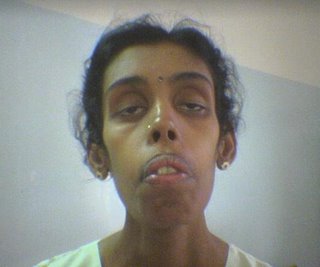Dystrophia Myotonica

I joined the neurology PACES course in TTSH in Singapore last year. One of the consultant told me that they like to show up "clinic cases" in PACES exam. One of their favourites is dystrophia myotonica that is uncommon in general practice . Remember this face for PACES!
The key features are bilateral ptosis with marked wasting of temporalis, facial muscles, sternomastoids. (no frontal balding in female)
There are features of myotonia i.e. when she shake hands there is a delay before she release her grip. Percussion myotonia is also demonstrable after tapping on the thenar eminence. Always warn them that the hit would be painful! The alternative site would be over the extensor digitorum.


Look for pacemaker in dystrophia myotonica patient because they are at risk for dysrythmias 2nd to cardiomyopathy. Practically, we do yearly ECG for screening purposes during follow up.

Labels: Neurology








1 Comments:
it is not enough to impress the examiners by saying it is dystrophia you have to show them the signs by asking the patient to clinch his teeth , to close his eyes tightly and to make agrip with quick release . gyenecomastia , DM and cardiomypathy are known asocciations . FH of similar conditions and side effects of phenytoin .
Post a Comment
<< Home